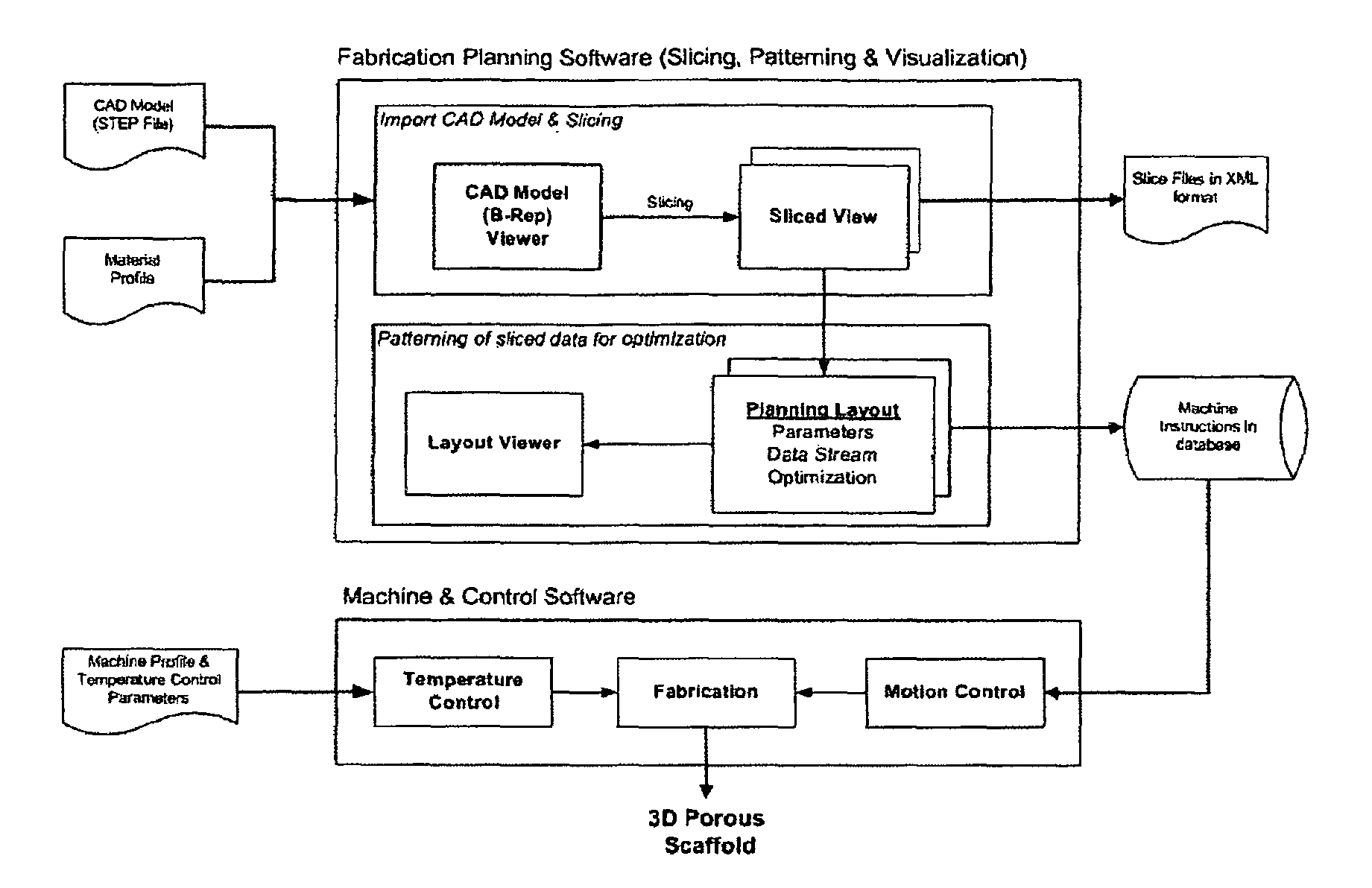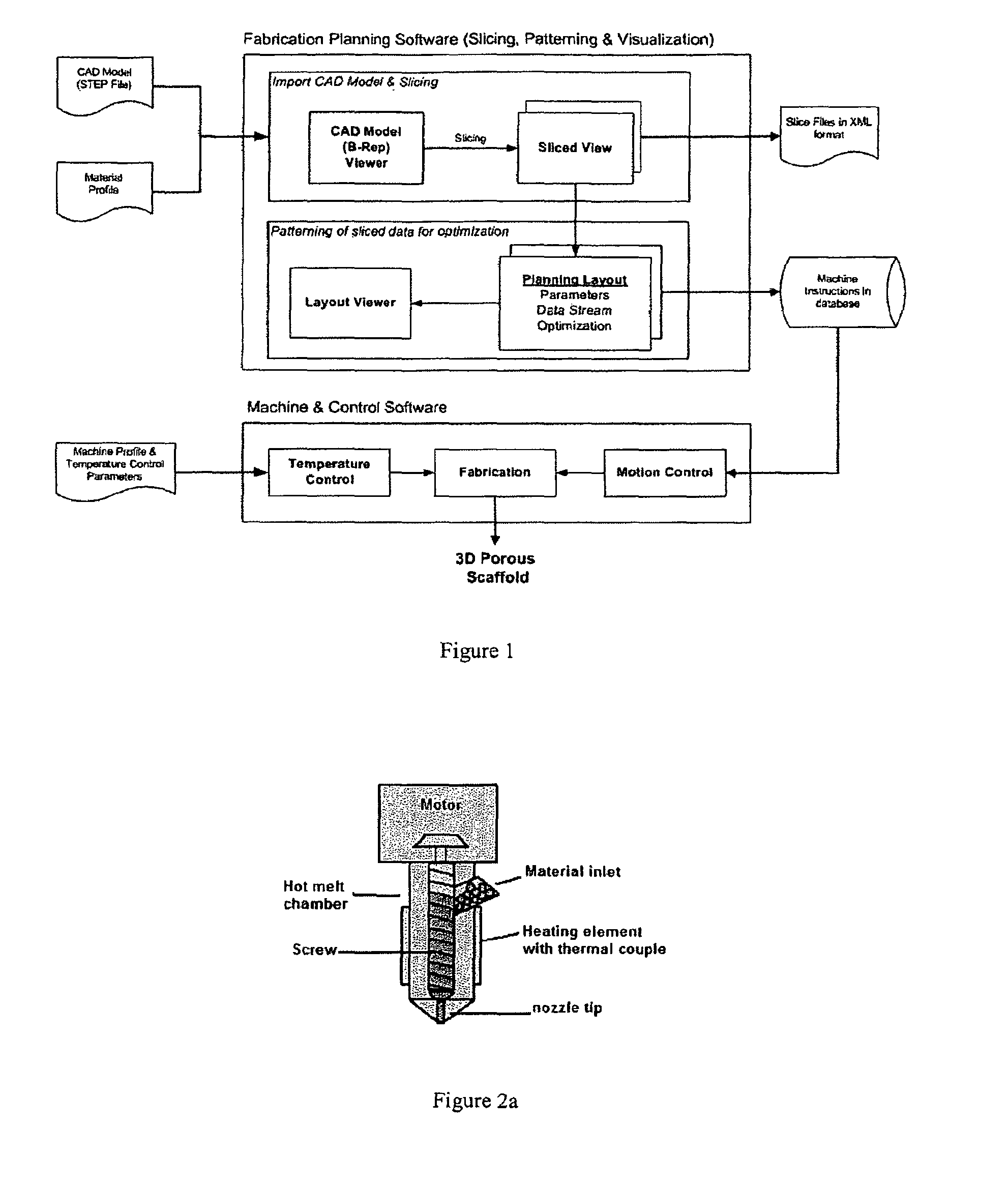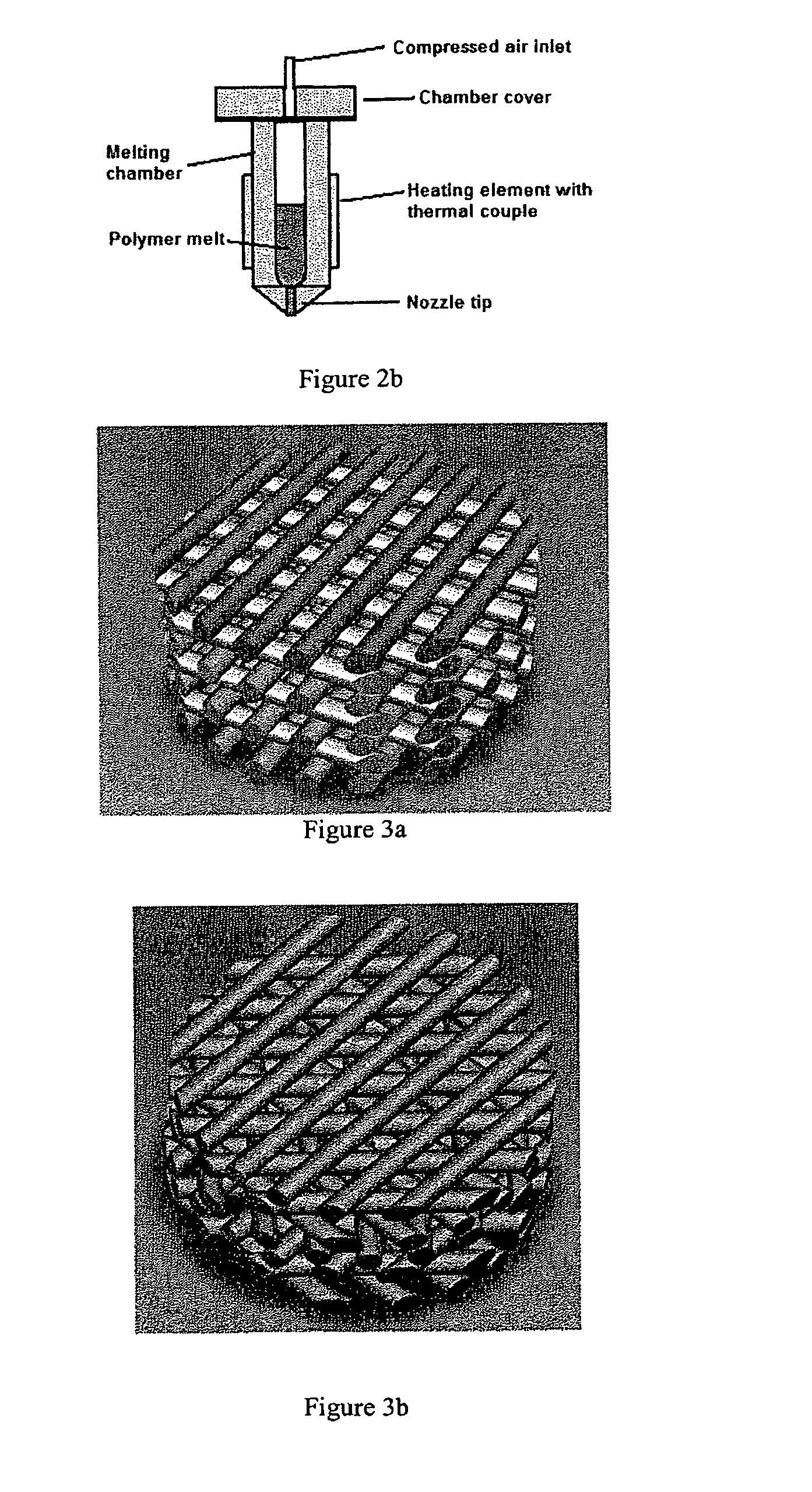Methods and apparatus for fabricating porous 3-dimensional cell culture construct for cell culture and other biomedical applications
a cell culture and construct technology, applied in the direction of additive manufacturing processes, manufacturing tools, instruments, etc., can solve the problems of difficult recovery or isolation of cells cultured in 3d gel systems, inconvenient for researchers, and difficult to exchange nutrient and metabolic products of cultured cells, so as to minimize the possibility of heat-induced polymer degradation
- Summary
- Abstract
- Description
- Claims
- Application Information
AI Technical Summary
Benefits of technology
Problems solved by technology
Method used
Image
Examples
Embodiment Construction
[0025]The present invention provides an RP system which can directly use hot melt polymers for fabricating porous 3D construct based on CAD model. The RP system can use polymer pellets / particles / beads directly without the need to fabricate polymeric filament first. To realize the direct use of polymer hot melt, the RP system uses a hot melt chamber which is mounted on a robotic dispensing arm or a XYZ motion control system. The hot melt chamber is equipped with a delivery mechanism, such as compressed air, a plunger, a extrusion screw, or a combination of two of the above, to force the molten polymer passing through a nozzle, which is attached to the hot melt chamber. The extruded polymer thin filament deposits onto the positions according to the computer generated model, in a layer-by-layer fashion, similar to FDM. The present invention can use any type of thermal plastic polymer pellets, beads, particles, which are suitable for extrusion and injection molding, as well as composite...
PUM
| Property | Measurement | Unit |
|---|---|---|
| inner diameter | aaaaa | aaaaa |
| pore size | aaaaa | aaaaa |
| temperature | aaaaa | aaaaa |
Abstract
Description
Claims
Application Information
 Login to View More
Login to View More - R&D
- Intellectual Property
- Life Sciences
- Materials
- Tech Scout
- Unparalleled Data Quality
- Higher Quality Content
- 60% Fewer Hallucinations
Browse by: Latest US Patents, China's latest patents, Technical Efficacy Thesaurus, Application Domain, Technology Topic, Popular Technical Reports.
© 2025 PatSnap. All rights reserved.Legal|Privacy policy|Modern Slavery Act Transparency Statement|Sitemap|About US| Contact US: help@patsnap.com



